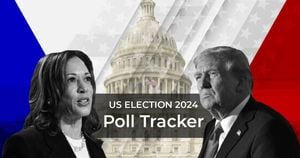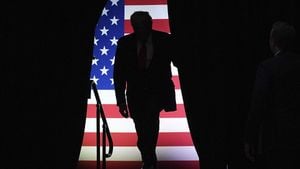Many young Americans find their news not from traditional media, but from social media influencers—a trend that's becoming more pronounced each year. A recent study conducted by the Pew Research Center reveals some staggering statistics: nearly 40% of Americans aged 18 to 29 rely on news influencers for their updates on current events. This research spotlights the growing influence of social media figures, particularly during politically charged times like the 2024 U.S. elections.
So, what exactly constitutes news influencers? According to the Pew study, these are individuals with significant followings (at least 100,000) who regularly post about current events and civic issues across platforms like Facebook, Instagram, TikTok, X (formerly Twitter), and YouTube. Notably, influencers often carry no formal ties to traditional media organizations, raising questions about the reliability and accuracy of the information being disseminated.
Riding the wave of digital consumption, the social media platform X became particularly pivotal during the 2024 electoral season. The study discovered about 85% of news influencers are active on this platform, making it the go-to place for political discussions and campaign activities. Not only was X the focal point for influencers, but it also attracted scrutiny over claims of spreading misinformation and favoring certain political agendas. Elon Musk's ownership of X, touted as the 'town square for free speech', remains controversial. While many champions the site for promoting diverse viewpoints, critics argue it skews toward conservative content.
It's important to point out the demographic breakdown of these influencers. The Pew study indicated a significant gender disparity: men represent about 63% of news influencers, compared to 30% women. When it came to political leanings, the findings showed not only more right-leaning influencers but also reveal some strategic approaches to engaging voters. Many male influencers have leaned toward right-wing positions, catering particularly to young male audiences who favored Donald Trump during the election. Content targeted at this demographic played heavily on social media, influencing how young voters perceived the candidates.
Two notable influencers are Joe Rogan and Alex Cooper, both of whom were instrumental for campaign strategies across party lines. Their immense followings presented platforms for both President-elect Trump and Vice President Kamala Harris to engage with younger voters effectively. Trump specialized his outreach by connecting to influencers part of the so-called "manosphere," aiming to solidify his stronghold among young men. It’s evident political campaigns are adapting rapidly to this new media environment, hoping to resonate with significant sections of the electorate.
While these influencers wield considerable power to shape public perception, they often blur the line between personal opinion and objective reporting. Many influencers lack formal journalistic training, resulting in content where news, opinion, and advertisements intermingle, thereby complicate viewers’ ability to discern fact from fiction. Amid grows concern about misinformation proliferation, it's revealed through research from the News Literacy Project, about 80% of teenagers encountered posts promoting conspiracy theories, with many expressing belief in at least one theory.
This fundamental issue of discerning legitimate news is compounded by young audiences' behavior toward information consumption. Around 45% of Generation Z indicate they turn to platforms like TikTok for news; and over half reported following political leaders online. Yet, only 40% acknowledged they frequently fact-check their sources. The sheer volume of information available and the vast number of influencers means many young adults consume news without critically evaluating its credibility.
The year 2024 has seen the digital literacy conversation take center stage, emphasizing the need for educational systems to adapt. Experts assert teaching young people how to navigate online information is more urgent than ever. Sam Wineburg, Ph.D., an educational psychologist, noted, "Quality information is to civic comprehension what clean air and water are to civic health." Further, about 94% of teens surveyed agree schools should include media literacy as part of their education, indicating readiness for such initiatives.
Despite these calls for action, many view the introduction of digital literacy as slow-moving at best. Some state legislatures are beginning to introduce measures for digital literacy education, albeit progress remains limited on broader scales. The urgency is heightened knowing the incredible power influencers hold, as well as their potential to mislead without accountability or disclaimers traditionally expected from political advertisements.
Conclusively, the noted study by Pew and various factors indicate how entrenched news influencers have become within the information ecosystem, especially for young Americans. Going forward, it appears imperative to bolster educational efforts focusing on media literacy, empowering youths to navigate the often murky waters of digital news effectively. And as social media continues to shape today’s political landscapes, both policymakers and educators face the challenge of adapting to new communication paradigms to protect informed citizenship and civic health.



